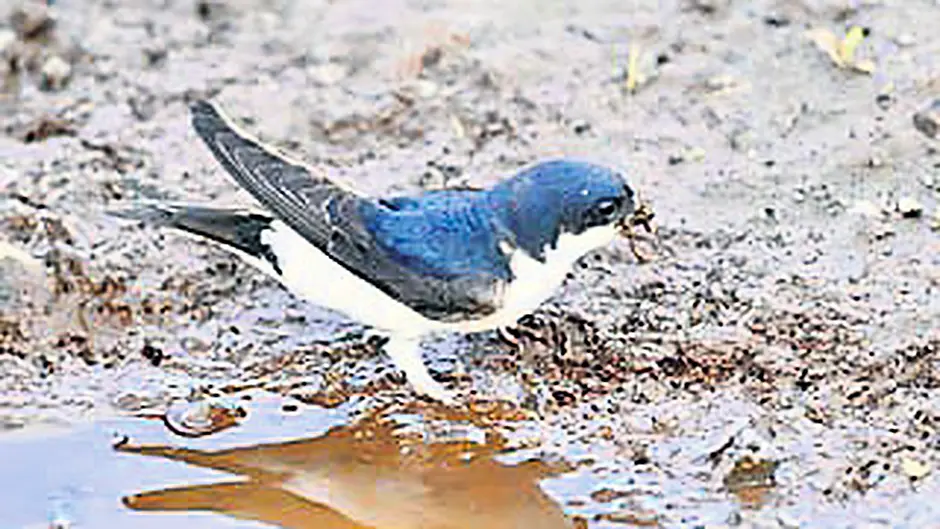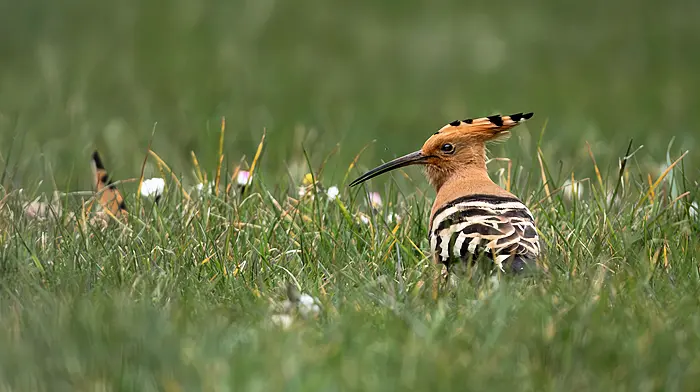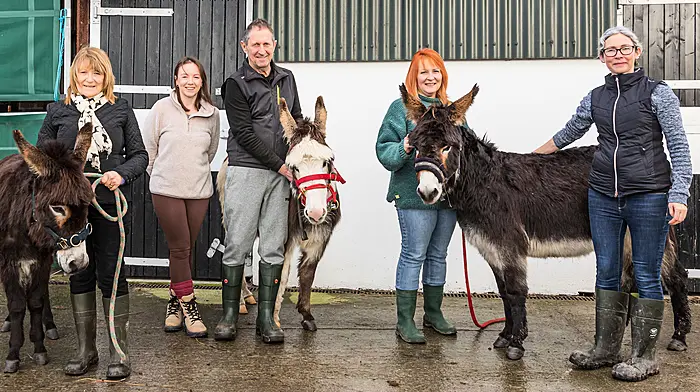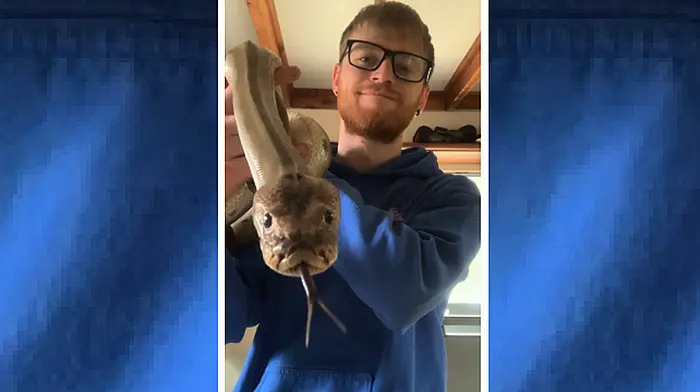BY ANN HAIGH
AS we come to the end of 2022 many, including myself, take time to reflect on the year gone by. However, because much of the natural world is cyclical, when you reflect on the biodiversity that appeared at different times over the previous year, you also create hope and anticipation for the year ahead. This week, in the last column of the year, I look at West Cork nature through the year and pick out some highlights of the various seasons.
Winter
According to Met Éireann, the meteorological seasons are based on the annual temperature cycle. Winter, therefore, spans the coldest period of the year from December to February. Kicking off 2023 deep in winter can be a bleak prospect as we perceive that nature is in hibernation.
This is true for hedgehogs and bats, our only native mammals to truly hibernate. Other mammals such as foxes and badgers don’t hibernate, in fact badgers give birth in January and February and cubs remain underground for the first two months of life. Winter temperatures cause our frogs and common lizards to enter brumation, the term used for hibernation in cold blooded species. Queen bumblebees, ladybirds and certain butterfly species enter a period of dormancy to preserve energy, known as diapause, which is the insect version of hibernation.
With all this dormancy, bird enthusiasts are likely to be the most satisfied naturalists during winter. Birds do not hibernate but use migration as a strategy to cope with adverse temperatures and food shortages. Though many of our summer visitors such as swifts and swallows have long gone, we see an influx of migrant birds, coming from colder climates such as Greenland, Iceland and Scandinavia to avail of our milder winters. These incoming migrant birds may include barnacle and brent geese, whooper swans, redwings, fieldfares, black redstarts and widgeon.
Last week we spotted a lone barnacle goose in Toe Head, seemingly a little lost and separated from its flock. Keep your eyes open for these winter visitors.
Blooming wildflowers are certainly not at their most plentiful in winter, but still findable, as evidenced by the annual New Year’s survey carried out by the Botanical Society of Britain and Ireland (BSBI).
In 2022 the survey was carried out from the 1st to the 4th of January and daisy, dandelion, groundsel and annual meadow grass were the most found plants in flower.
Primrose comes from the Latin ‘Prima rosa’ and means first rose. While not actually in the rose family, it is heartwarming to spot the first primroses because these herald the passage of time and the start of spring.
Spring
We associate spring with boxing Irish hares, flower blossom, appearance of bees and butterflies, nesting birds and frog spawn.
Indeed, in spring our native hares exhibit a dramatic courtship behaviour, known as boxing. You might think the boxing fights are between males, warring over females, but it is in fact the females warning off over-enthusiastic males who can justifiably be as ‘mad as March hares’. Queen bees emerge from hibernation and fill the air with their upbeat buzzing as they busily search for early sources of pollen and nectar to replenish stores lost during their winter slumber. For a period in spring, every bumble bee you spot will be female until they find suitable nesting sites to lay eggs and start a new colony.
Luckily for the bumble bee, spring usually sees our hedges awash with nectar-providing white blossom from blackthorn, hawthorn and crab apple. Supply can unfortunately outstrip demand, hence the latest pollinator initiative of ‘No Mow May’. This initiative encourages us to leave our lawns and parks bloom un-mowed until June at least. The blackbird and robin tend to be some of the earliest birds to nest, followed by the wonderful arrival of swallows, swifts, sand martins and house martins.
Birds are spotted busily collecting nesting materials. Frog spawn certainly represents spring, but this has been appearing from January in West Cork for many years now.
The Farmers’ Wildlife Calendar is an interesting project run by the National Biodiversity Data Centre; it invites members of the public to submit dates that they first spot nine key natural annual events. They are tracking any temporal changes that may be due to climate change. Key events such as the first appearance of frog spawn, flowering primroses and blackthorn, the orange tip butterfly and the cuckoo are among the sightings we are being asked to record.
Summer
In June, July and August West Cork nature is well and truly alive. Bees, hoverflies, butterflies, dragonflies and damselflies are flying delights and grasshoppers chirp from the ground. Bats are out of hibernation and to the fright of some, but the delight of many, they make their presence known on late evening walks.
On hot sunny days, our only native reptile, the common lizard, basks on stone walls and scurries out of sight as we walk past.
Speaking of basking, basking sharks, the largest fish in Irish waters and the second largest in the world (second to the whale shark) delight tourists and residents alike by their languid presence on the ocean surface just off our coast. Minke and humpback whales are also provide excitement on whale watching trips or via binoculars from the shore. Jellyfish thrive in our warmer seas, with some species to watch out for as regards stinging, but rarely any with serious consequences in Ireland.
Wildflowers are in bloom and sustain much insect life, such as the colourful masses of black and orange cinnabar moth caterpillars that feed on the bright yellow ragwort. In August blackberries appear and it’s time for a harvest, making sure to leave some for the birds. 2022 was a bumper year for blackberries and we are still working through our freezer stash.
Autumn
In September, October and November our deciduous trees put on a colour show. The change in temperature prompts them to stop producing green chlorophyll in their leaves.
The remaining chlorophyll breaks down into the glorious red, yellow and orange leaf colours of autumn. At the same time, a large and fascinating diversity of mushrooms pop up in woods and fields. One of my family’s favourites is the shaggy inkcap, also known as the ‘lawyer’s wig’ due to its elongated and scaly looking cap.
The shaggy inkcap is a dramatic looking mushroom that ‘deliquesces’ as it ages, dripping black inky liquid and reproductive spores back into the ground. Like all mushrooms, the part we see is the fruiting body, equivalent to a flower, and the main part of the mushroom, the mycelium, lies beneath the soil. In the case of the shaggy inkcap, the mycelium produces packets of toxins that kill tiny worms in the soil. The fungal hyphae (branches) then digest and absorb the resulting nutrients from the dead worm.
A carnivorous mushroom! Nature is fascinating.
Plants like thistle and teasel go to seed and birds such as goldfinches can be seen snacking on the seeds.
We have a wonderful wildlife calendar in West Cork and as Mark Twain famously said, ‘To one in sympathy with nature, each season, in its turn, seems the loveliest’. Reflecting on the beauty and wonder of 2022, it is hard to say what season I am looking forward to the most in 2023. Which season is your favourite?
• Ann Haigh MVB MSc MRCVS is a Skibbereen resident, a mum-of-two and a veterinarian with a masters in wildlife health and conservation and she is passionate about biodiversity and nature.








